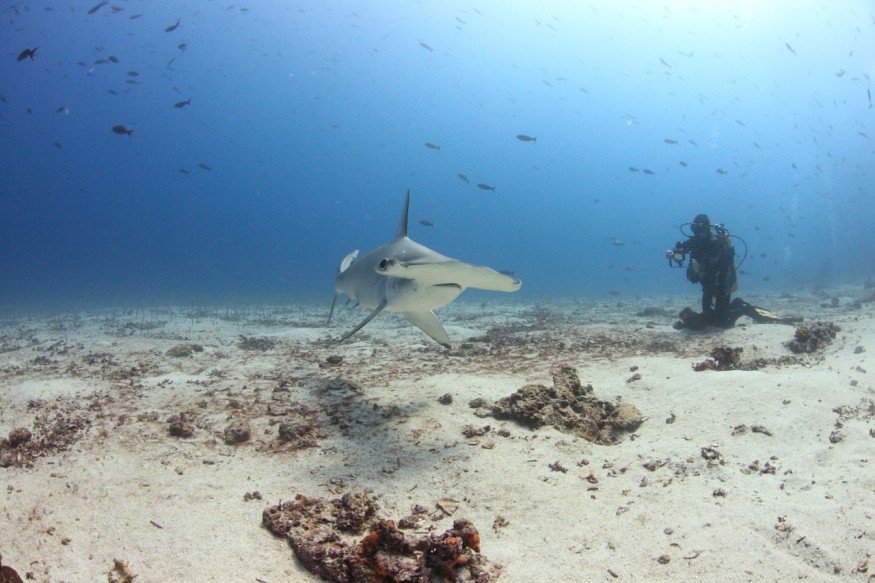
Hammerhead sharks were interestingly observed holding their breath to maintain their body warmth as they traversed through cold and deep waters. This thermoregulation strategy may be common for marine creatures that dive deep into the sea.
Hammerhead Sharks Hold Their Breath
SciTechDaily reports that sharks are completely ectothermic creatures, like most fish. The temperature of their bodies also largely depends on their direct environment. Because of this, huge predatory marine creatures may find it physiologically difficult to maintain their body warmth while swimming through deeper and colder waters to hunt for food.
Now, the researchers have discovered the way hammerhead sharks maintain body warmth despite the cold temperatures that come with deeper waters. According to The Independent, Mark Royer from the Hawaii Institute of Marine Biology and his team were able to come up with implants that were placed on adult sharks. These implants gauged ambient water temperatures, body movements, activity rates, depth, and body temperature.
They observed that the sharks kept their temperatures elevated even as they did deep dives. The hammerheads only started losing heat as they went back to the surface. This was detailed in the Science journal.
According to BGR, hammerhead sharks take a deep breath and then close their gills.
As hammerhead sharks swim through deeper and cooler waters, their internal heat is maintained as they keep their gill slits and mouths closed.
Considering how sharks do not inhale air the same way as mammals, one may find it odd how these marine creatures hold their breath as they swim. It is important to note, however, that their gills take oxygen from water. Scientists were quite surprised to find hammerhead sharks displaying such behaviors while swimming deep.
ALSO READ : 1,000-Pound, 14-Foot Shark Caught in Texas; Fishermen Battled for 90 Minutes To Capture the Hammerhead
Shark Body Warmth
BGR adds that several hammerhead species, such as the scalloped hammerhead, depend on surrounding water temperatures for body temperature regulation. The Independent notes that these creatures dive into water depths that go as deep as 800 meters. In such waters, temperatures may reach as low as four degrees Celsius. Hence, it is important for them to preserve the warmth in their bodies if they want to move deeper into cooler areas.
Because of this, it makes sense for such creatures to close any possible heat escape channels. As hammerheads hold their breath, heat is prevented from spilling out of their mouths and gills.
The study is quite interesting and enables specialists to know more about marine creatures. As specialists keep monitoring these creatures, they will likely know more about their behaviors and mechanisms.
The scientists note that there is a need for further study to confirm such thermoregulatory mechanisms in hammerhead sharks.
Read also: Seafood Fraud: Meat From Threatened Shark Is Being Served in Fish and Chip Shops Across Australia
Check out more news and information on Animals in Science Times.
© 2025 ScienceTimes.com All rights reserved. Do not reproduce without permission. The window to the world of Science Times.











